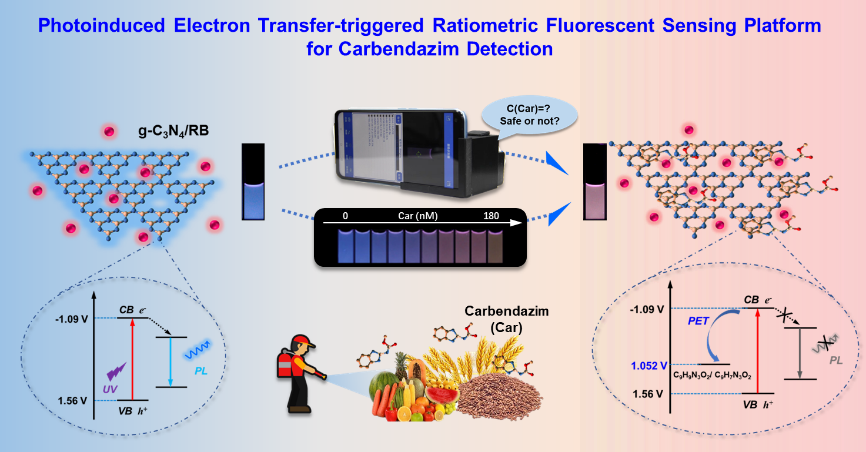Research
Ratiometric Fluorescence Sensing System Provides Smarter and Faster Screening of Carbendazim Residues
| By
Recently, the research team led by Prof. JIANG Changlong from Institute of Solid State Physics (ISSP), Hefei Institutes of Physical Science (HFIPS) of Chinese Academy of Sciences (CAS) proposed a new sensing system for detecting carbendazim residues by utilizing ultrathin graphitic carbon nitride (g-C3N4) nanosheets and rhodamine B (RB).
The research result has been published in Analytical Chemistry.
Carbendazim, as a common pesticide, belongs to the benzimidazole family, has been widely used in agricultural production. As it degrades slowly in nature, the carbendazim residues could be absorbed by respiration, skin or ingestion into the body easily. At present, the common analytical methods for carbendazim residues detection are still limited to laboratory instruments and immunoassay, etc., which usually suffer from high cost, complex operation and long time. It is important to develop a new method for carbendazim detection with high sensitivity and selectivity.
The novel photoinduced electron transfer-triggered g-C3N4\Rhodamine B sensing system developed in this study was for selective and visual quantitative detection of carbendazim residues.
Scientists found the carbendazim molecules could be enriched onto the g-C3N4 nanosheet through π-π stacking, then the blue-emitting fluorescence of g-C3N4 nanosheet could be quenched through photoinduced electron transfer, while the orange fluorescence of RB remained unchanged.
"Our sensor realized rapid visual response to trace carbendazim residues through sensitive fluorescence changes from blue to purple," said ZHANG Qianru, first author of the paper. The detection limit (LOD) is as low as 5.89 nM, far below the maximum residue standard.
On this basis, by the aid of 3D printing technology and color recognition, the portable intelligent sensing platform designed by the research team can be successfully applied to the detection of carbendazim in actual samples, and shows good anti-interference ability.
This study not only provides an advanced sensing strategy for sensitivity and rapid carbendazim detection in the field, but also offers new insights into other trace analytes quantitative analysis.
This research work was supported by the Research of National Key and Development Program, National Natural Science Foundation of China, Key Research and Development Program of Anhui Province.

Illustration of the design of the ratiometric fluorescence sensor for carbendazim detection. (Image by ZHANG Qianru)

- Attachments Download:
-
contact
Prof. JIANG Changlong
E-mail: cljiang@iim.ac.cn


